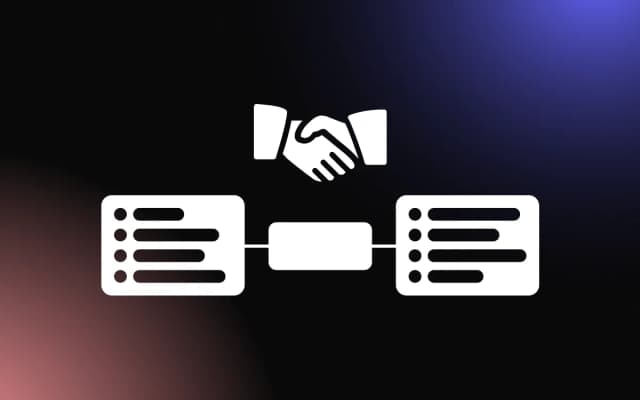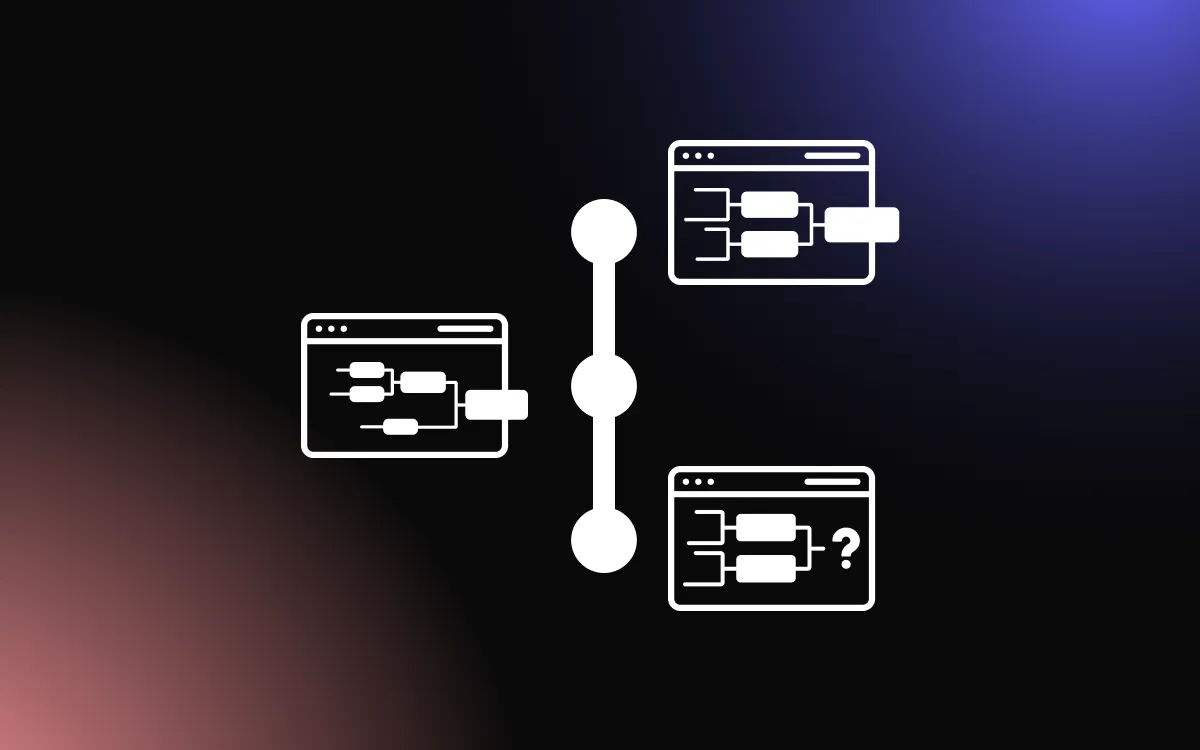Summary (TL;DR): In this article, we examine the significance of tournament brackets in esports, discussing their impact on player strategies, viewer engagement, and tournament organization. We highlight the use of technology in bracket management, economic implications, community building, and address challenges in ensuring fair play. The piece concludes with a look at future trends in esports brackets.

In the exhilarating world of competitive gaming and esports, tournament brackets play a pivotal role in shaping the competitive landscape. These brackets are more than just a method of organizing matches; they are integral to the narrative and excitement of esports tournaments.
From local gaming events to international esports championships, the structure and design of tournament brackets significantly enhance the competitive experience for both players and spectators.
This article delves into the role of tournament brackets in competitive gaming and esports, exploring how they contribute to the drama, strategy, and community engagement inherent in these events.
Introduction to Tournament Brackets in Esports
The Evolution of Brackets in Competitive Gaming
Esports, or competitive video gaming, has seen a meteoric rise in popularity, bringing with it the adoption and evolution of tournament brackets.
- From Niche to Mainstream: Initially a niche activity, esports has grown into a global phenomenon. This growth has seen the adaptation of traditional sports tournament structures, like brackets, to organize and streamline competitive gaming events.
- Influence of Technology: The advancement of online streaming platforms and gaming technologies has facilitated the widespread adoption and viewing of esports tournaments, making bracket-based competitions more accessible and engaging to a global audience.
Understanding Different Bracket Formats in Esports
Esports tournaments employ various bracket formats, each with its unique structure and strategy.
- Single-Elimination Brackets: The simplest form, where teams or players are eliminated after a single loss. This format is straightforward but can be unforgiving.
- Double-Elimination Brackets: Participants have two chances before being eliminated. This format provides a lower bracket for those who lose once, offering a path to the finals even after an initial defeat.
- Round-Robin into Brackets: Some tournaments start with a round-robin phase, where all participants play each other, and then the top performers move into a bracket phase. This format ensures participants have multiple games before potential elimination.
- Swiss System: Increasingly popular in esports, this system pairs participants with similar win-loss records. It's used to determine a set of top performers who then enter a final bracket phase.
The Impact of Brackets on Player Strategy and Preparation
How Brackets Influence Game Tactics
In esports and competitive gaming, the structure of tournament brackets significantly influences player strategies and tactics.
- Anticipating Matchups: Players often tailor their strategies based on potential matchups in the bracket. Understanding the strengths and weaknesses of possible opponents is crucial for planning game tactics.
- Adaptability: In formats like double-elimination or round-robin, players must be adaptable. They may face a variety of playing styles and strategies, requiring flexibility in their approach.
- Psychological Preparation: The bracket format can also impact a player’s psychological preparation. For instance, in a single-elimination bracket, the high stakes of each match can add pressure, necessitating mental resilience.
- Long-Term Strategy: In tournaments with multiple rounds or phases, players need to think long-term. This includes managing energy and focus across games and days, and potentially hiding certain strategies in early rounds to surprise opponents later.
Preparing for Opponents in Bracketed Competitions
Effective preparation for opponents in bracketed competitions is a multi-faceted process.
- Research and Analysis: Players often spend time researching their potential opponents, analyzing their previous games to identify patterns, preferred strategies, and weaknesses.
- Scrimmages and Practice: Practicing against a variety of opponents, especially those who can mimic the styles of potential competitors in the bracket, is a common preparation strategy.
- Mental and Physical Preparation: Preparing for bracketed competitions isn't just about in-game strategy. Players also focus on their mental and physical well-being to ensure peak performance.
- Team Dynamics: In team-based games, understanding and optimizing team dynamics is crucial. Teams work on communication, coordination, and supporting each other’s strengths.
- Contingency Planning: Players prepare for unexpected scenarios, such as technical issues, changes in game meta, or surprising strategies from opponents.
Enhancing Viewer Engagement Through Brackets
Brackets as a Tool for Storytelling in Esports
In esports, brackets do more than just organize competition; they serve as a powerful narrative tool, enhancing the storytelling aspect of tournaments.
- Narrative Arcs: Brackets create natural narrative arcs, with underdog stories, rivalries, and comeback tales unfolding as the tournament progresses. These arcs provide context and depth to matches, making them more engaging for viewers.
- Player and Team Journeys: The progression of players or teams through a bracket highlights their journey, challenges, and growth. This journey often becomes a focal point for commentators and analysts, adding a human element to the competition.
- Historical Context: Brackets allow for the incorporation of historical context, such as past performances or previous encounters between competitors. This background enriches the viewing experience by adding layers of anticipation and significance to matches.
Creating Suspense and Excitement for Audiences
The structure of brackets inherently builds suspense and excitement, key elements for viewer engagement in esports.
- Uncertainty and Predictions: The unpredictability of outcomes in a bracketed tournament keeps viewers on the edge of their seats. Fans often engage in predictions and speculation, adding to the excitement.
- Climactic Build-Up: As the tournament progresses, the stakes get higher, and matches become more intense. This climactic build-up culminates in the final rounds, often resulting in peak viewer engagement.
- Interactive Bracket Challenges: Many tournaments offer interactive bracket challenges for viewers, where they can predict outcomes and compete against others. This interactivity increases investment in the tournament’s progression.
- Real-Time Updates and Analysis: Providing real-time updates and in-depth analysis during the tournament keeps viewers informed and engaged. This can include live standings, statistical breakdowns, and expert commentary.
- Social Media Engagement: Leveraging social media to discuss bracket developments fosters a community experience. Fans can share their reactions, predictions, and support for teams or players, enhancing their overall engagement.
The Role of Brackets in Tournament Organization
Streamlining Event Management with Brackets
Brackets are essential in organizing and streamlining esports tournaments, ensuring a structured and efficient progression of events.
- Clear Tournament Structure: Brackets provide a clear and concise structure for tournaments, outlining who plays whom and the path to the finals. This clarity is crucial for both participants and organizers in planning and executing the event.
- Scheduling Efficiency: With brackets, organizers can efficiently schedule matches, allocate resources, and manage time. This helps in minimizing downtime and ensuring a smooth flow of the tournament.
- Ease of Tracking Progress: Brackets make it easier to track the progress of competitors throughout the event. They provide a visual representation of the tournament's advancement, which is beneficial for organizers, players, and viewers alike.
Balancing Fairness and Competitive Integrity
The design of brackets plays a critical role in maintaining fairness and competitive integrity in esports tournaments.
- Seeding Systems: Proper seeding in brackets ensures that the strongest competitors do not face each other in early rounds, leading to a more balanced and fair competition.
- Format Selection: Choosing the right bracket format (e.g., single-elimination, double-elimination, round-robin) is crucial in balancing fairness with the nature of the game and the tournament's objectives.
- Adaptability to Game Dynamics: The bracket format should complement the dynamics of the specific game, considering factors like match duration, player fatigue, and the potential for comebacks.
- Transparency: Maintaining transparency in how brackets are structured and how competitors are seeded is vital for upholding trust among participants and viewers.
- Handling Discrepancies: Establishing clear protocols for handling discrepancies, technical issues, or disputes is essential for maintaining competitive integrity and fairness.
- Feedback Incorporation: Organizers should be open to feedback from participants and viewers regarding the bracket system and be willing to make adjustments in future tournaments.
Leveraging Technology in Esports Brackets
The Best Tool for Bracket Management

For effective and efficient bracket management, the Bracket Maker by Common Ninja is the best tool available. This platform is specifically designed to streamline the process of creating and managing brackets for tournaments and competitions of all types. Its user-friendly interface allows organizers to easily set up and customize their brackets, accommodating various formats like single elimination, double elimination, and more.
What sets the Bracket Maker apart is its robust set of features that enhance user engagement and simplify management tasks. Organizers can integrate interactive elements such as voting and predictions, making the tournament more engaging for participants and spectators. The tool also offers a high degree of customization, including multiple layout options and the ability to add images or custom CSS, ensuring that each bracket is not only functional but also visually appealing. With its responsive design, the brackets are accessible and display perfectly across all devices, providing a seamless experience for all users. For anyone in need of a comprehensive, easy-to-use, and versatile bracket management tool, the Bracket Maker by Common Ninja is the ideal choice.
Innovations in Real-Time Bracket Updates
Real-time updates in esports brackets have greatly enhanced the viewing and participating experience, keeping everyone informed and engaged.
- Live Updates: Technology enables live updates of match outcomes, ensuring that brackets are always current. This is crucial for both participants planning their strategies and audiences following the tournament.
- Interactive Brackets: Some platforms offer interactive brackets where viewers can click on matches to view details like player statistics, match history, and even replay highlights.
- Mobile Accessibility: With the widespread use of smartphones, mobile-friendly bracket platforms have become essential. They allow participants and fans to track tournament progress on-the-go.
- Integration with Streaming Services: Many bracket platforms are integrated with live streaming services, offering viewers a seamless experience where they can watch matches and track bracket progress simultaneously.
- Predictive Analysis: Advanced platforms use predictive analytics to provide insights into potential match outcomes, enhancing the strategic aspect for participants and the speculative interest for viewers.
- Social Media Integration: Integration with social media allows for easy sharing of brackets and match outcomes, increasing the tournament's reach and engagement.
The Economic Impact of Brackets in Esports
Attracting Sponsors and Partnerships
The popularity and structured format of esports brackets have made them an attractive avenue for sponsors and partnerships, significantly impacting the economic landscape of esports.
- Brand Visibility: Brackets offer high visibility for sponsors, as they are frequently referenced throughout tournaments. This visibility is appealing to brands looking to connect with the esports audience.
- Targeted Advertising Opportunities: Sponsors can target their advertising efforts around specific matches or stages within a bracket, reaching audiences at peak engagement moments.
- Partnership Synergies: Companies often seek partnerships with esports tournaments that align with their brand values or target demographics. Brackets provide a clear and structured format for these partnerships.
- Innovative Sponsorship Formats: Beyond traditional advertising, sponsors can engage in innovative formats like branded content within the bracket interface, sponsor-specific predictions or challenges, and interactive fan experiences.
Monetization Opportunities Through Brackets
Esports brackets offer various monetization opportunities, contributing significantly to the industry's revenue.
- Interactive Bracket Challenges: Platforms can host interactive bracket challenges with entry fees or in-app purchases, offering prizes for accurate predictions. This not only engages fans but also opens up a revenue stream.
- Merchandising: Brackets can drive merchandising opportunities, such as selling team jerseys, accessories, or digital content linked to popular teams or matches in the bracket.
- Streaming and Broadcasting Rights: The popularity of esports brackets can increase the value of streaming and broadcasting rights, as they guarantee a structured and engaging tournament narrative.
- Fan Engagement Platforms: Monetization can also come from fan engagement platforms integrated with brackets, offering premium features like exclusive content, detailed analytics, or ad-free experiences.
- Data Monetization: The data generated from fan interactions with brackets is valuable for market research, allowing for targeted marketing and strategic planning.
Community Building Around Esports Brackets
Fostering Fan Communities and Discussions
Esports brackets play a pivotal role in cultivating vibrant fan communities, fostering discussions and a sense of belonging among enthusiasts.
- Shared Interest and Engagement: Brackets create a common ground for fans to rally around, discussing predictions, favorite teams, and players. This shared interest fosters a strong sense of community.
- Discussion Forums and Platforms: Online forums, gaming websites, and dedicated esports platforms often host discussions centered around tournament brackets. These spaces allow fans to analyze matches, share insights, and celebrate victories.
- Fan-Driven Content: Brackets encourage the creation of fan-driven content, such as blogs, vlogs, and podcasts, where enthusiasts discuss bracket progress, predict outcomes, and analyze strategies.
- In-Person Viewing Events: For major tournaments, in-person viewing parties and events centered around bracket stages can strengthen community bonds and enhance the fan experience.
Social Media and Community Engagement Strategies
Social media is a powerful tool for enhancing community engagement around esports brackets.
- Real-Time Updates and Interactions: Utilizing social media for real-time updates on bracket progress keeps the community engaged. Interactive posts, live tweets during matches, and instant reactions foster lively discussions.
- Branded Hashtags: Creating branded hashtags for tournaments or specific bracket stages can centralize conversations and increase visibility.
- Fan Polls and Contests: Hosting polls, contests, and bracket predictions on social media platforms can increase participation and engagement among fans.
- Influencer Collaborations: Collaborating with esports influencers and personalities to discuss brackets and share content can attract a wider audience and stimulate community interaction.
- User-Generated Content Promotions: Encouraging fans to create and share their own content related to the brackets, and featuring this content on official channels, can amplify engagement and community feeling.
- Community Feedback and Inclusion: Actively seeking and incorporating community feedback on tournament formats and bracket experiences can make fans feel valued and included in the esports ecosystem.
Challenges and Solutions in Esports Bracketing
Addressing Common Bracketing Issues in Esports
Esports tournaments, while growing in popularity, face unique challenges in bracketing that require careful consideration and strategic solutions.
- Balancing Competitiveness: One of the primary challenges is ensuring a balanced competition where no team or player is unfairly advantaged or disadvantaged. This can be addressed by using seeding based on past performance or rankings to arrange matchups.
- Handling Discrepancies: Discrepancies, such as player dropouts or last-minute changes, can disrupt the bracket flow. Solutions include having standby players or teams, flexible scheduling, and clear rules for handling such situations.
- Technical Difficulties: Online esports events are prone to technical issues like connectivity problems. Having robust technical support and backup plans, such as rescheduling or alternative playing methods, is essential.
- Player Fatigue: In extensive tournaments, player fatigue can affect performance, especially in formats like double-elimination. Organizers should schedule adequate breaks and consider the total duration of the tournament.
Ensuring Transparency and Fair Play
Maintaining transparency and fair play is crucial for the integrity of esports tournaments.
- Clear Rules and Regulations: Establish and communicate clear rules and regulations regarding the bracketing process, match conduct, and dispute resolution.
- Transparent Seeding Process: The seeding process should be transparent and based on objective criteria. Publicly sharing the seeding methodology and criteria can help in maintaining trust among participants and viewers.
- Independent Oversight: Having an independent body or committee to oversee the tournament can ensure fairness and impartiality, especially in handling disputes and enforcing rules.
- Community Involvement: Involving the community in some decision-making processes, such as feedback on tournament formats or rule changes, can enhance transparency and fairness.
- Regular Audits and Reviews: Conducting regular audits and reviews of the tournament processes, including bracketing and match outcomes, helps in identifying and addressing any fairness issues.
- Anti-Cheat Measures: Implementing robust anti-cheat measures and monitoring systems is essential to prevent unfair practices and maintain competitive integrity.
Conclusion
Tournament brackets have become a cornerstone of the esports and competitive gaming world, offering a structured yet dynamic framework for competition. As we've seen, these brackets do more than just schedule matches; they create storylines, foster rivalries, and build anticipation. The strategic design of these brackets, whether single-elimination, double-elimination, or round-robin, adds depth to the competition, challenging players and captivating audiences.
In the rapidly growing field of esports, the thoughtful implementation of tournament brackets is key to delivering thrilling and memorable experiences. As competitive gaming continues to evolve, the role of brackets in enhancing the spectacle and appeal of esports is undeniable, making them a fundamental aspect of the industry's success.


